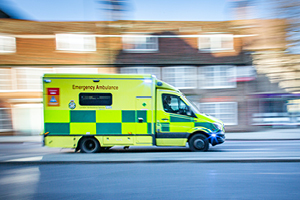
Why are Ambulances Taking So Long?
In April 2022, The Guardian reported that the Ambulance Service was failing to meet their basic agreement to treat the sickest in a timely manner, referring to comments from the Royal College of Emergency Medicine’s president, Dr Katherine Henderson.
Dr Henderson went on to say that the NHS can no longer respond promptly to seriously ill patients, meaning that people suffering from strokes, cardiac arrests are waiting too long for an ambulance to reach them. Alongside this, Dr Henderson continued that vulnerable and elderly patients are in some cases spending the night on the floor after suffering a fall.
Meanwhile, ambulances in England took an average of 42 minutes and seven seconds last month to respond to emergency calls, such as burns, epilepsy and strokes, up from 38 minutes and four seconds in January and more than double the 18-minute target.
What is the Average Ambulance Response Time UK?
According to an article in The Independent, published March 2022, ambulances take an average of 42 minutes and seven seconds to respond to emergency calls.
Ambulance Response Time Standards
Across England, the overall waiting list has it 6.1m. In a bid to overhaul ambulance response times, NHS England outlined a new set of performance targets for the ambulance service in July 2017. The revamped standards follow a triage system that aims to provide the most appropriate response based on a patient’s clinical needs.
This is categorised as follows:
Category 1 – Life Threatening
A Category 1 is considered a threat to life, requiring immediate intervention and/or resuscitation. Standards set out by NHS England note that all ambulances average at around seven minutes as a response target for Category 1 calls, and 90% of Category 1 calls in 15 minutes.
Category 2 – Emergency
Category 2 calls should be responded to in approximately 18 minutes and all ambulance trusts should respond to 90% of Category 2 calls in 40 minutes. Classified as an emergency or a potentially serious condition, Category 2 calls are likely for a person suffering major burns, suspected sepsis, heart attack – amongst other medical emergencies.
Category 3 – Urgent
Category 3 is classified as urgent and doesn’t mean there is a threat to life. Typically a patient needs treatment to reduce pain or can be treated at the scene. There isn’t a target average response time for Category 3, although ambulance trusts must respond to 90% of Category 3 calls in 120 minutes.
Category 4 – Non Urgent
As a national standard, 90% of Category 4 calls should be responded to in 180 minutes. Category 4 calls are classified as non urgent but in need of assessment.
Act Now and Install a Defib Machine
AEDs are a life saving investment that can be the difference between life and death when a person goes into cardiac arrest. If deployed within a minute of a cardiac arrest occurring, the use of an defib machine can lead to a 90% survival rate.
To find out more information on renting an AED with Defib Machines, contact our team on 0800 0852 733.


